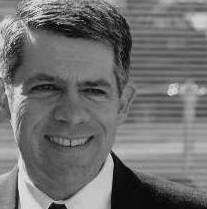In the mid 1940’s Argentina was entering the era of “La Plata Dulce.” (Sweet Money) They had nearly $2 billion in foreign capital reserves and possibly the largest domestic gold reserves in the world. Through the next five years Argentina looked like the up and coming nation on the world scene. We don’t hear about much of this now, however, because Argentina made some poor decisions when they should have been making their wisest ones. They didn’t manage their programs well, they spent in foolish ways, the costs of the internal support of the government became bloated, even though they instituted severe austerity measures. They began to focus on “silver bullet” projects that had little hope of pulling them out of their downward spiral. But before we get to the failures, here is a short list of some of their incredible successes.
Between 1948 and 1952 Argentina beat the United States to become the World Basketball Champions. Mario Fangio was the world’s top Grand Prix driver, Enrique Morea won the Wimbledon Tennis Championships (the first Latin American to do so). Pedro Leopoldo Carrera won the World Billiard Championships. Pascual Perez won the World Boxing Title in Tokyo. Bernardo Houssay won the Noble Prize for Science (Medicine), again the first Latin American to win this prize. Delfo Cabrara won the Gold at the London Olympics in the Marathon. The Argentines had one of the most advance nuclear programs outside the United States (I’ve been to those facilities, and they were impressive). And the topic that got me thinking about this… In 1947 the Argentine Air Force was flying the Pulqui (arrow in the Araucana language).
This aircraft flew at 720 km/hr. Had a service ceiling of 45,000 ft and a range of 900km. It had four 20mm cannons, which was excellent firepower for the day. The U.S. fielded the F-80 in 1948 and was about equal in capabilities. In June of 1950 the Pulqui II flew. This jet aircraft had a swept wing design, could fly at 1050 km/hr, could fly for 2.2 hours and had four improved 20mm cannons. It was the first fighter jet from Latin America and only the fifth in the entire world.
The Pulqui II was so impressive the Dutch sent a contingency to buy it because they considered it a better option than the British and U.S. designs of the day. This was only the third swept wing aircraft in the world after the F-86 which would see action in the Korean War, and the MiG-15 which would have been no match for the Pulqui II.
So what happened? Why isn’t Argentina a world power today? What does this history have to do with the present? Next week's blog will add to this discussion.






No comments:
Post a Comment